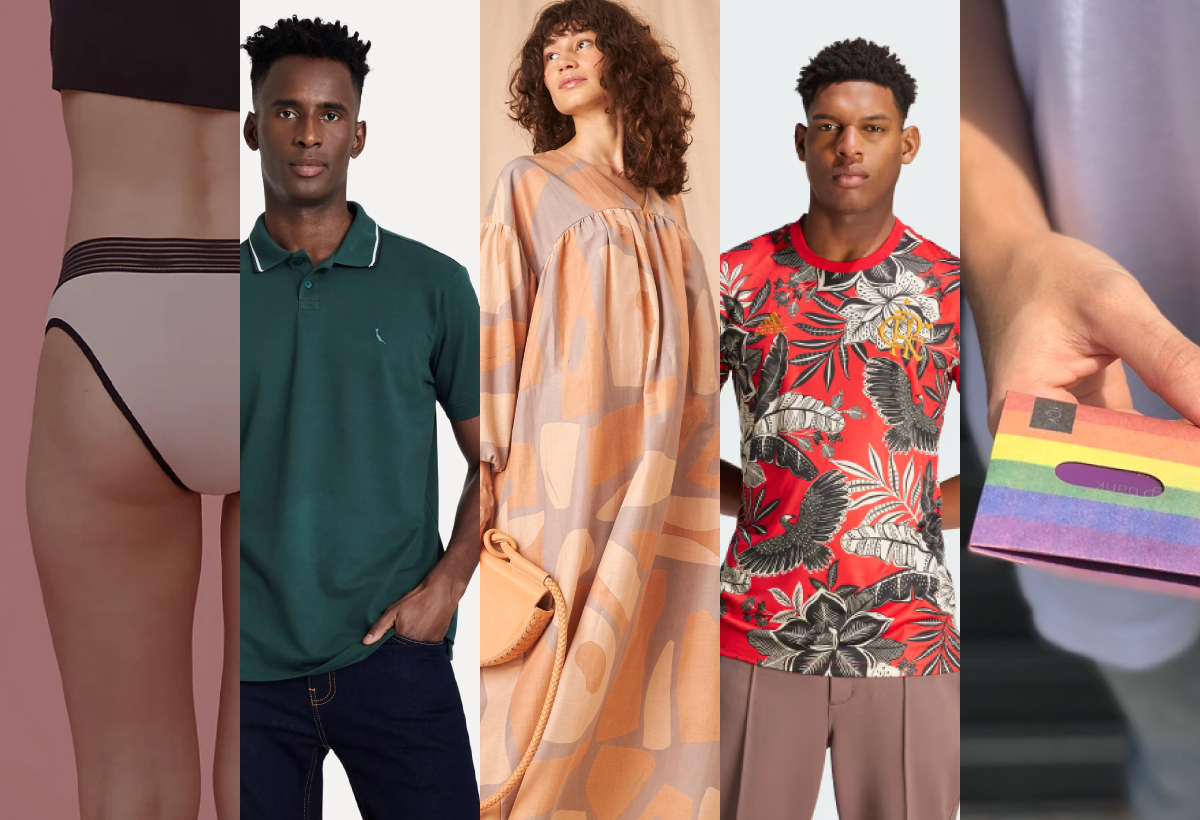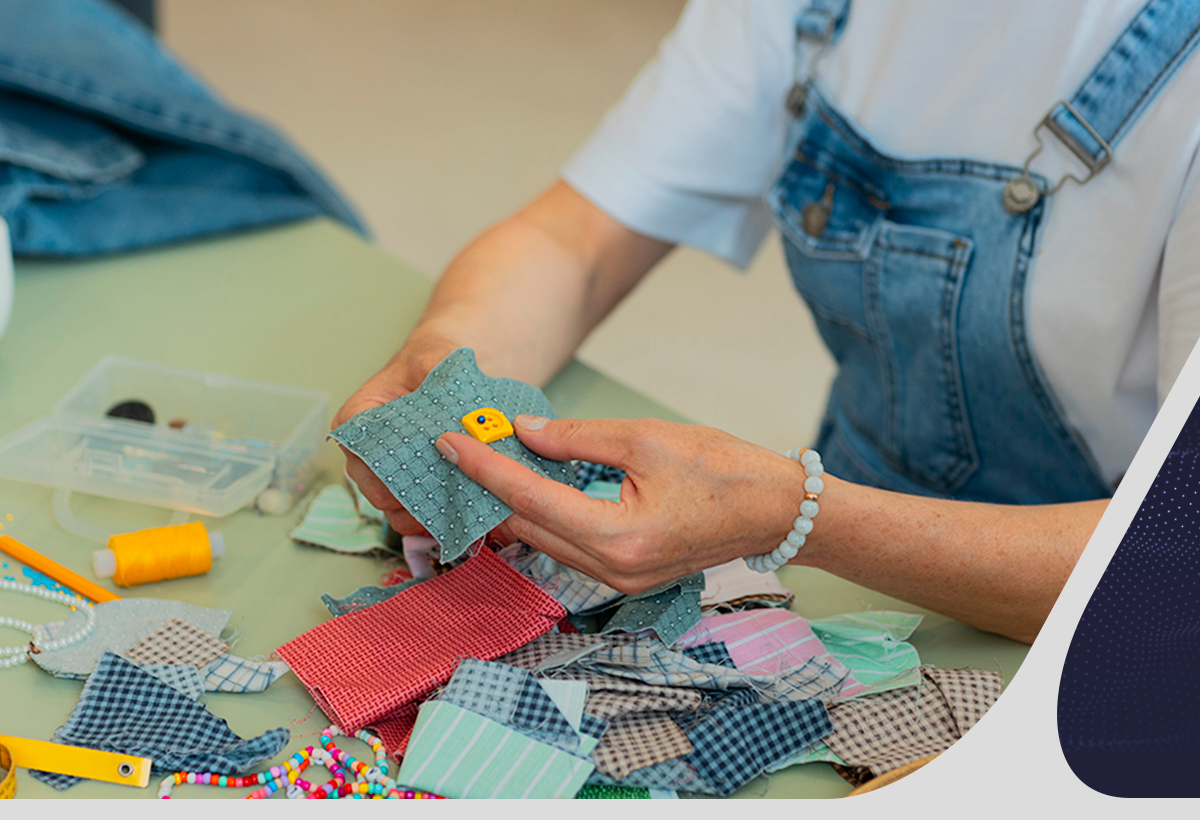The fashion industry does not have a very favorable reputation when it comes to sustainability. Not coincidentally, it is one of the most polluting activities in the world!
To adapt to the new market reality, industry 4.0 and consumer demands, companies need to change the way they produce, think and sell.
In this sense, we will address the relationship between the fashion industry and the environment. Furthermore, we will present brands that have set a good sustainable example through new processes and technologies. Continue reading to check it out!
Let’s go?
Fashion industry and the environment: a degrading history
The fashion industry is responsible, on average, for 10% of all global greenhouse gas emissions., mainly carbon. According to the Exam, if there are no changes, the sector will be responsible for using up to ¼ of the world’s carbon budget by 2050! Just to give you an idea, companies in the sector emitted around 2.1 billion tons of these gases worldwide in 2018..
Os dados foram divulgados pela In addition to these, textile operations also generate different negative impacts on the environment. After all, unfortunately, they contribute to theCNN.
In addition to these, textile operations also generate different negative impacts on the environment. After all, unfortunately, they contribute to the soil pollution and water scarcity.
>> Also read: Fast Fashion: what are the impacts on textile production?
The fashion industry’s biggest challenge: reducing waste
The industry causes the disposal of tons of clothes that are useless for production (stained, with small holes or minimal damage) and population. They are deposited in landfills without adequate care.
According to Exame, only 20% of textile waste is reused or recycled globally, while 80% are landfilled or incinerated. In this scenario, the chemical components and paints present in the parts contaminate the environment.
According to data from Abrelpe, also according to CNN, Brazil generates more than 4 million tons of textile waste per year. And this number corresponds to 5% of all waste produced in the country! According to experts mentioned in the article, fabrics can take 5 to 10 years to decompose in nature. And, some of them, unfortunately, take time hundreds of years to degrade. Which increases the contamination period.
To complete, based on data gathered by Brazil Agency, more than 92 million tons of textile waste have been discarded in recent years.
And the prospect is that there will be an increase in 60% or more than 140 million tons over the next 8 years (since 2022).
In conclusion, today, the fashion industry is the 2nd biggest polluter in the world! It is second only to the oil industry.
Industry 4.0 and sustainability: what is the relationship?
With the beginning of the use of electricity in the fashion industry, productivity began to increase at astonishingly increasing levels.
Mainly due to the arrival of the productive models of Toyotism and Fordism, during the Third Industrial Revolution.
The problem is that unrestrained energy consumption also impacts the environment. After all, this It is not a renewable resource and its production generates greater carbon gas emissions and soil and water pollution . aIndustry 4.0, or Fourth Industrial Revolution, foresees the conscious use of these inputs, through technologies, for the production of the most varied segments. The impacts of this concept are mainly perceived in:
- Cost reduction;
- Better inventory and time management;
- Increase in productivity.
The idea of Industry 4.0 is not only to encourage the adaptation of human tasks to automation. But it is also about reinforcing and practicing the essence of sustainability and the reuse of inputs through modern, efficient and technological machinery. These aspects are necessary for the continuous development of the sector and adaptation to the new reality of the market and the environment.
Brazil still faces apprehension and blockages when applying industry 4.0. However, this is a market that has been growing gradually. Therefore, investing in it is essential to get ahead of the bold competition. According to Mordor Intelligence, it is estimated that the size of the Industry 4.0 market will reach US$241.58 billion by 2028. The fashion industry that does not invest in technology will have a higher production:
- Delayed;
- Slow;
- Face;
- Susceptible to error;
- With low performance;
- High scrap rate;
The challenge here is to put aside the fear of investing in innovation! The use of technological and intelligent machines is the way to reduction of environmental impacts and for a more evolved and progressive textile industry.
The demands of the new consumer in the fashion industry

9 out of 10 consumers carry out online research before buying something, according to Google, cited by Revista Pequenas Empresas Grandes Negócios.
Isso demonstra uma maior preocupação com o que adquirem.
Currently, they are more informed and attentive to the main changes in society. Therefore, they demand that companies share their values and ideas, demanding transparent actions that demonstrate these positions, especially in the fashion industry. It is no coincidence that Brazilians’ fear of the planet has affected consumption and, therefore, 73% are changing to sustainable options, according to another Exame article. Additionally:
- 46% are willing to pay more for products developed in a sustainable way;
- 66% make purchasing decisions based on the environmental impact of a product or service.
The change in consumer thinking is a noticeable fact! They are adopting more conscious and sustainable habits in the clothes and accessories they buy, use and dispose of (properly).
Unlike past decades, consumers want to know where raw materials come from, and whether there is respect for the environment, workers and animals. In this sense, today, the search is for products:
- With more basic colors;
- Recycled;
- Reforested;
- Who have gone through upcycling;
- Vegan and ecofriendly.
Not to mention that, according to the Campinas Commercial Association (ACIC), they also seek to establish business with companies that:
- Use renewable energy (70% consumers);
- Reduce greenhouse gas emissions (28%);
- Reduce water and soil pollution (28%);
- They use sustainable packaging (24%).
Therefore, it is extremely important to highlight that having more sustainable and efficient production is a matter of survival..
Ou seja, é um requisito mínimo para se manter no mercado.
These demands from new customers must be the starting point for industrial adjustments.
5 companies in the fashion industry that are setting a good example

In a reality of degradation, some national brands are being well evaluated by consumers. This is because they are setting a good example of sustainability and conscious production in the fashion industry.
Check out the complete list below and get inspired!
1. Panty
This is a national brand that, in addition to working to strengthen women, does not follow standards. The company’s highlight line is reusable panties that replace disposable pads.
2. Reserva/ Eva
Winner of the Ecoera award in 2015, the Eva label, from the Reserva brand, developed a fabric which decomposes in just three years.
The company also offers free modeling and sewing classes to the community of Morro da Mangueira, in Rio de Janeiro, with clothes that would otherwise be incinerated.
Reserva is one of the most innovative brands on the market, according to Forbes, being certified as the Conscious Capitalism seal.
3. Flavia Aranha
Brand from São Paulo that only uses sustainable techniques to dye fabrics. The company uses natural dyes from renewable sources (leaves, roots, trees, fruits and bark).
Furthermore, most of the materials used in production are of organic origin.
4. Farm
Farm is a company from Rio that has gained prominence in the world! The connection with the nature and Brazilian culture has always been part of the brand’s identity. Today, in a constant search for innovation, Farm has applied ESG actions.
Por isso:
- Reuses fabric in production;
- Plant a thousand trees a day;
- Co-create with an indigenous community;
- Supports peripheral projects.
5. Fold
Dobra is a company that uses Tyvek in the development of its products, such as bags, wallets and even decorative items. This non-woven fabric is made up of approximately 30% recycled material and is still 100% recyclable.
To add, the brand has a program that takes its products back for reuse and recycling. More than 7,900 wallets, card holders and passport holders have already returned with this objective.
Read also: How to have a sustainable brand in the textile industry?
Eliminate waste once and for all!
As we saw previously, there are some main challenges in reducing the environmental impact of the fashion industry. To this end, it is essential to invest in solutions and intelligent textile machines to meet today’s consumer demands.
The sector needs to keep in mind that it is possible to be sustainable and, at the same time, more productive and profitable. And don’t forget! Customers want and seek more, especially value and respect for the environment.
It is worth highlighting that one of the ways to avoid waste and unnecessary expenses, which are also associated with environmental impacts, is by eliminating production bottlenecks.
So, click the button below and download the free infographic with 7 of the most common obstacles in the textile industry. Find out how to solve them!



